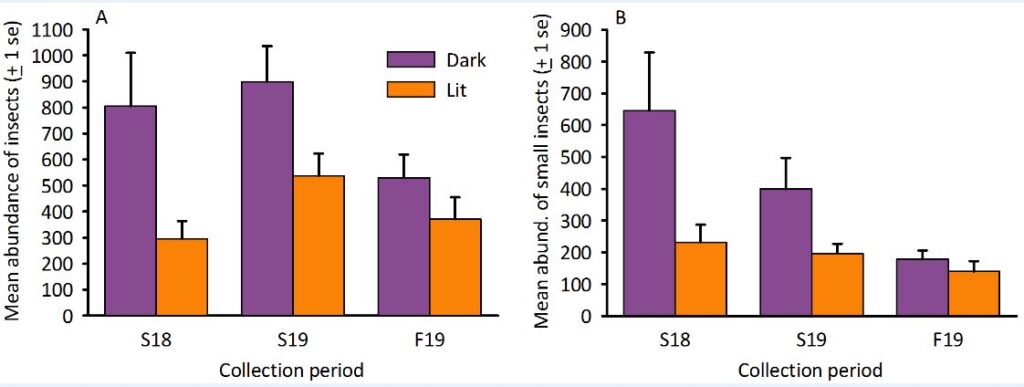Potential research projects involving insect community ecology
My research interests in general are in the dynamics and biodiversity of insect communities. I have studied tree-hole communities (water-filled rot holes in trees in which mosquitoes and other aquatic insects live), stream macroinvertebrates, pollinator communities in parks, beetle and bug diversity on cattle farms, insects on decomposing carcasses, and nocturnal insect communities affected by light pollution.

Projects on education research and biodiversity literacy
I am also engaged in discipline-based education research (DBER). Most recently, I have studied the impact of using online insect identification resources and open-access data portals on biodiversity literacy in an entomology course.
Check out my work on Google Scholar or Research Gate.
Project ideas
I am currently interested in more applied research projects:
- The effects of land use patterns and human activity on insect pollinator communities. I am currently working with three students to determine how plant-pollinator communities and pollinator diversity is impacted by site characteristics and surrounding land use patterns. We are performing this study on sites scattered throughout north Mecklenburg County.
- I may investigate the insect pollinators that visit two species of endangered/threatened plants found on lands stewarded by Catawba Lands Conservancy. The plants have populations on those lands, but no one really knows the insects that pollinate these plants. The two species bloom in late summer/fall, so this is a possible project in the fall semester.
- I am open to mentoring students interested in literature-based explorations, which would fall under BIO370: Directed Reading. Those projects would likely be explorations of ecological topics of interest to the student, in consultation with me.
- Examining the effects of light pollution on insect communities on campus. By setting up light traps (white sheets with a UV light hanging in front of them), we can collect evidence of insect abundance and diversity in different areas on campus, those that are light continuously and those that are unlit at night. The goal is to determine the impact of light on communities of insects.
- Determining the efficacy of various assessment and educational tools and activities. Biodiversity literacy has been an interest of mine recently. Species and biodiversity literacy are pedagogies that can increase understanding and appreciation of local and global biodiversity.
- I am open to collaborating with students on their own student-driven projects. If you have an idea that involves applied ecology of insects or biology education research, please contact me – I am happy to discuss and brainstorm ideas with you.
Criteria and expectations for collaborative research with Dr. P.
The insect projects are largely, but not always, collaborative. They involve fieldwork and are dependent upon the weather. I don’t allow students to conduct fieldwork solo, so this would require at least a pair of students, as I won’t be going out on every field trip. Typically, I spend a lot of time in the field with my students early on, training them and making sure protocols are well executed. As the semester proceeds, students do more of the work independently, at least until it is time for data analysis. These projects requires an interest in insects and/or ecology, and I generally ask for at least BIO114 as a pre-requisite, and a strong desire to conduct fieldwork. BIO112 or ENV201 are also adequate pre-requisites.
